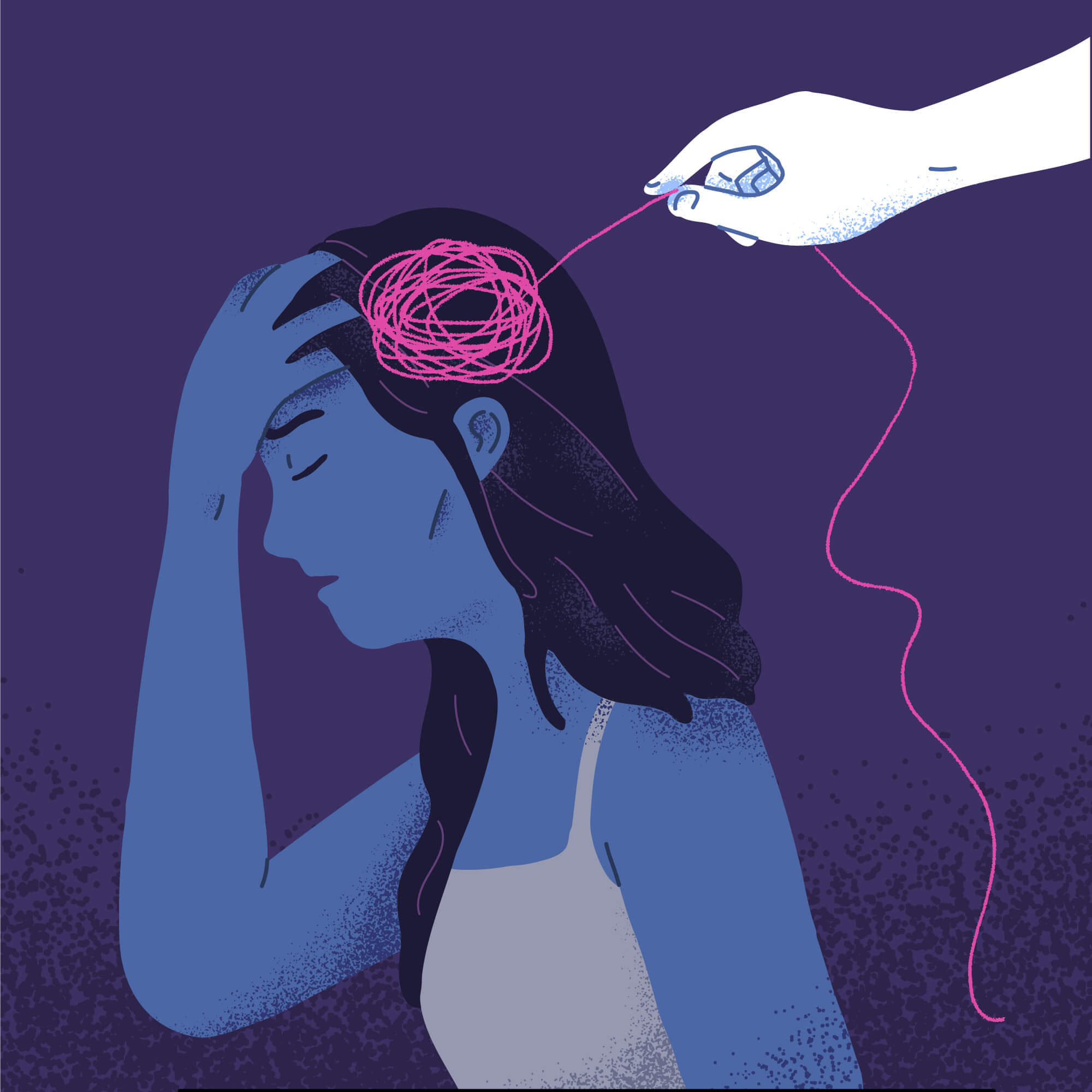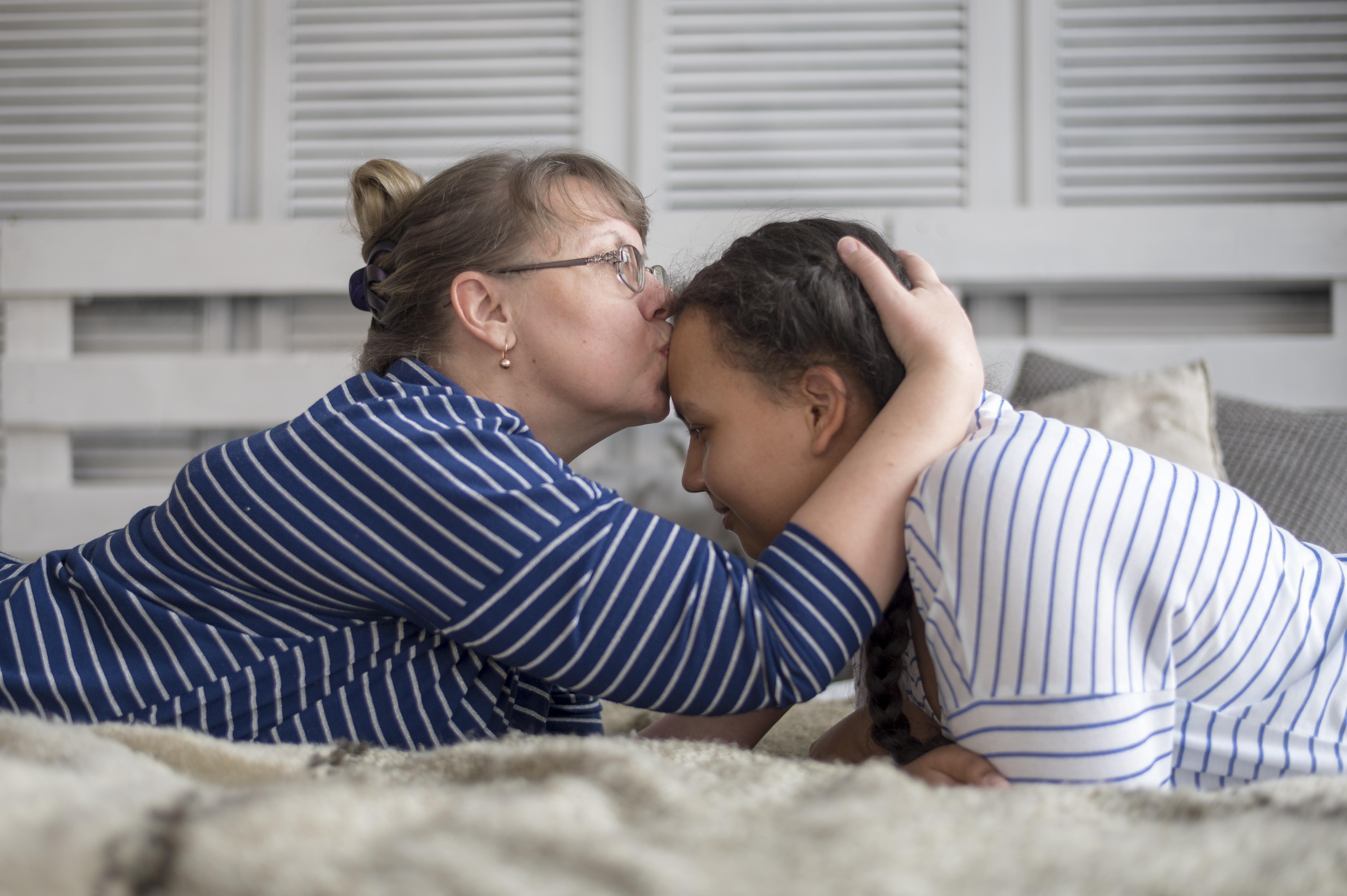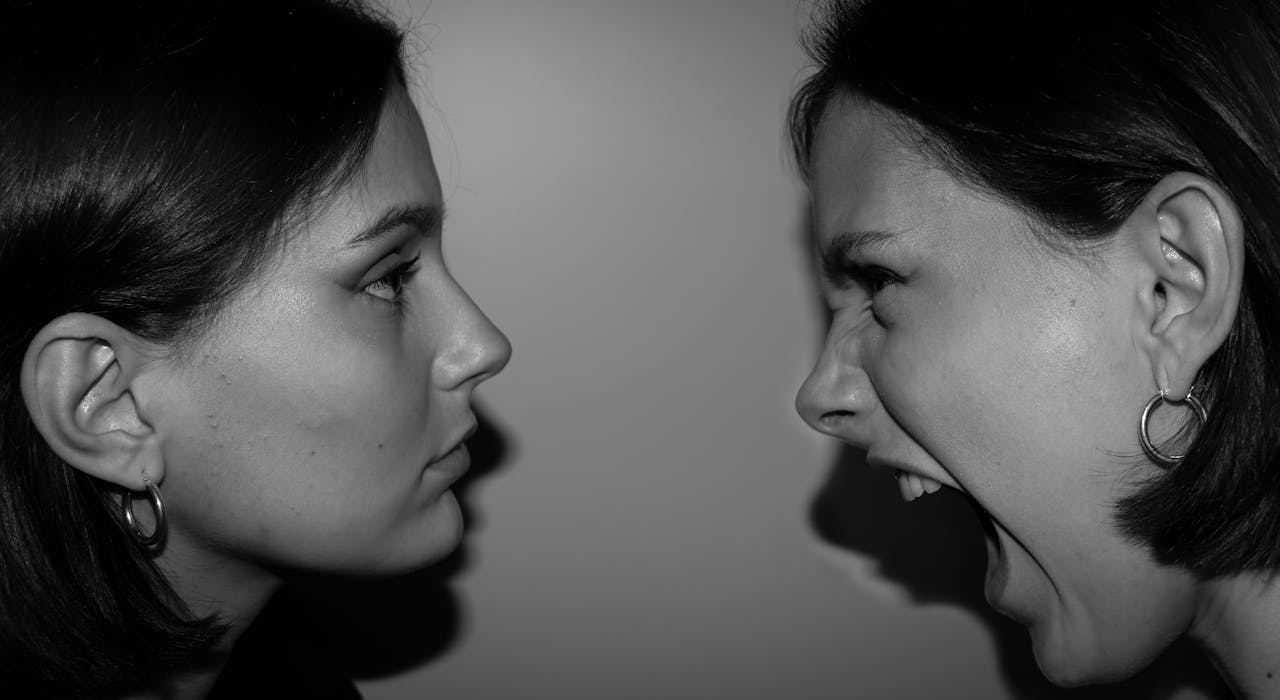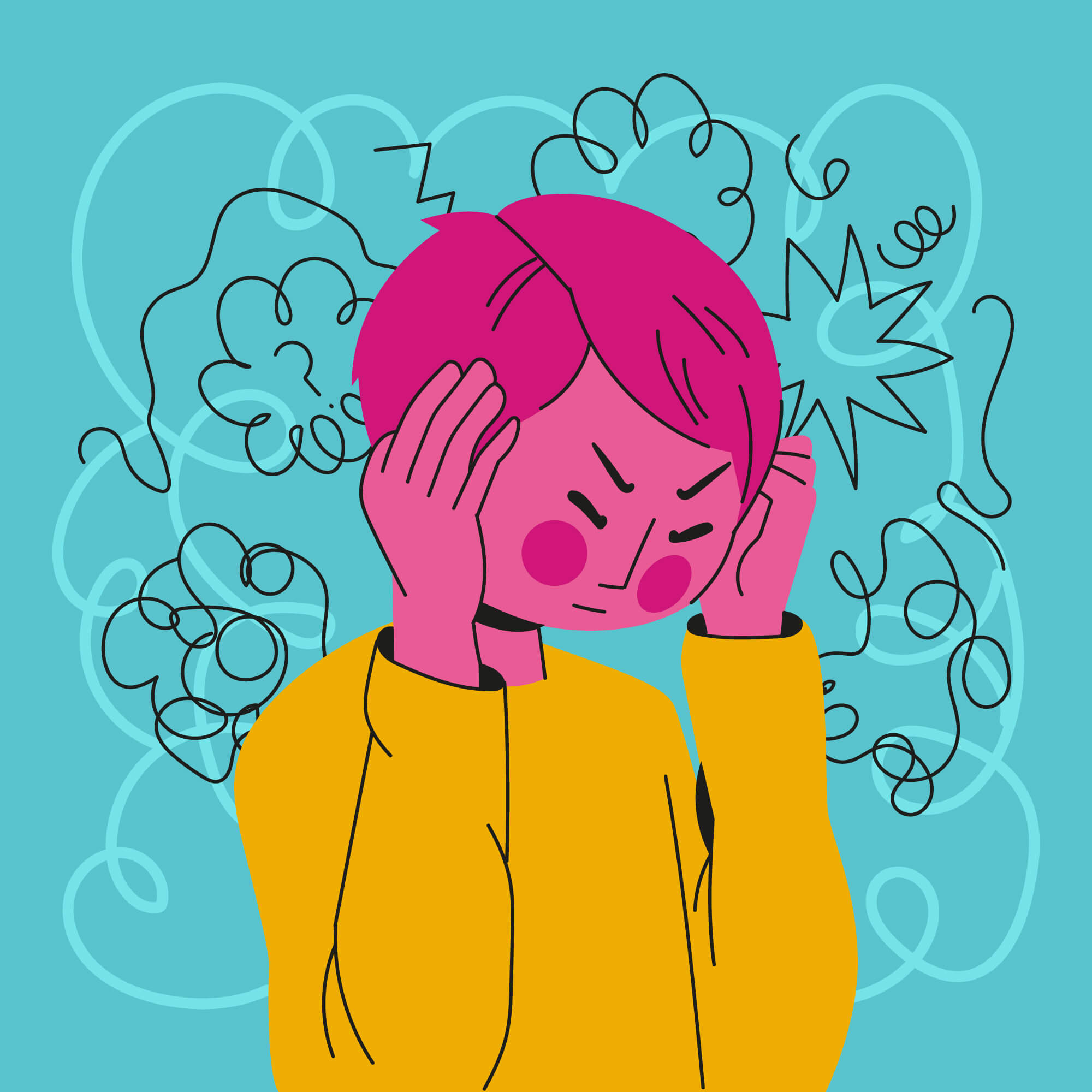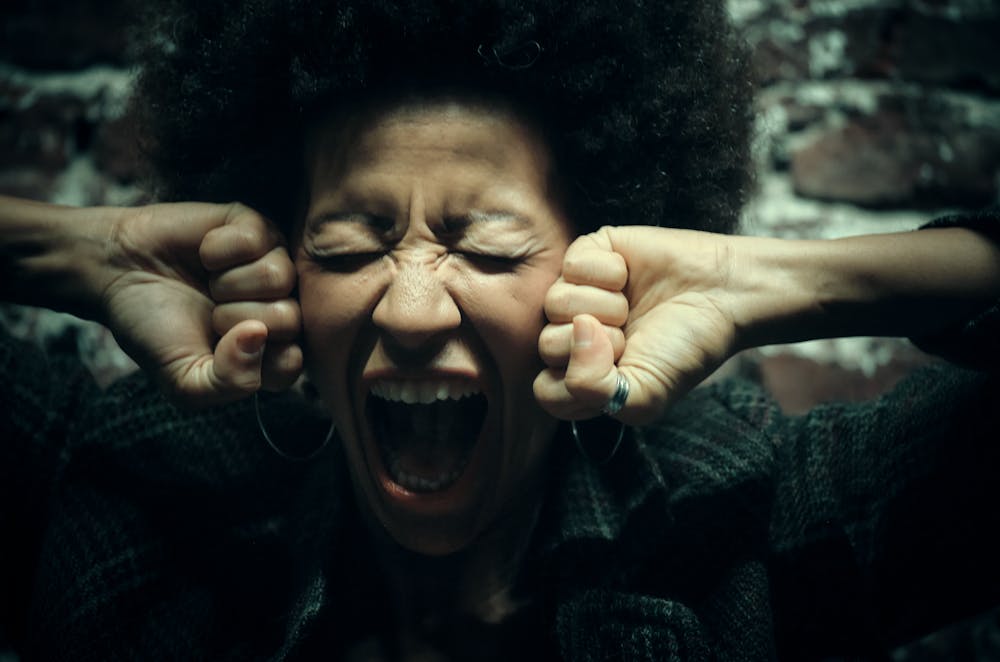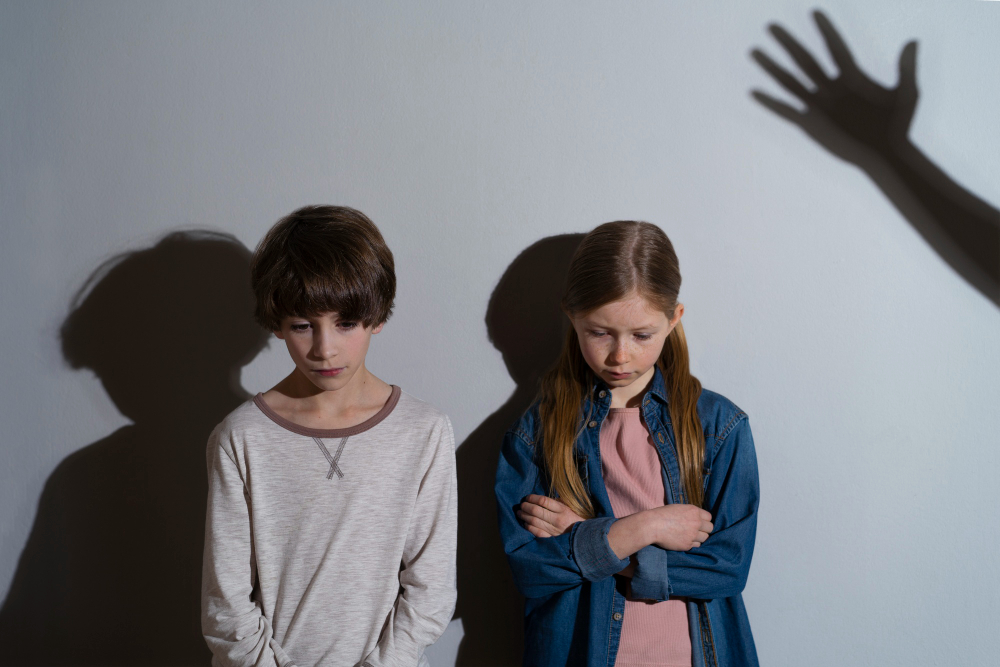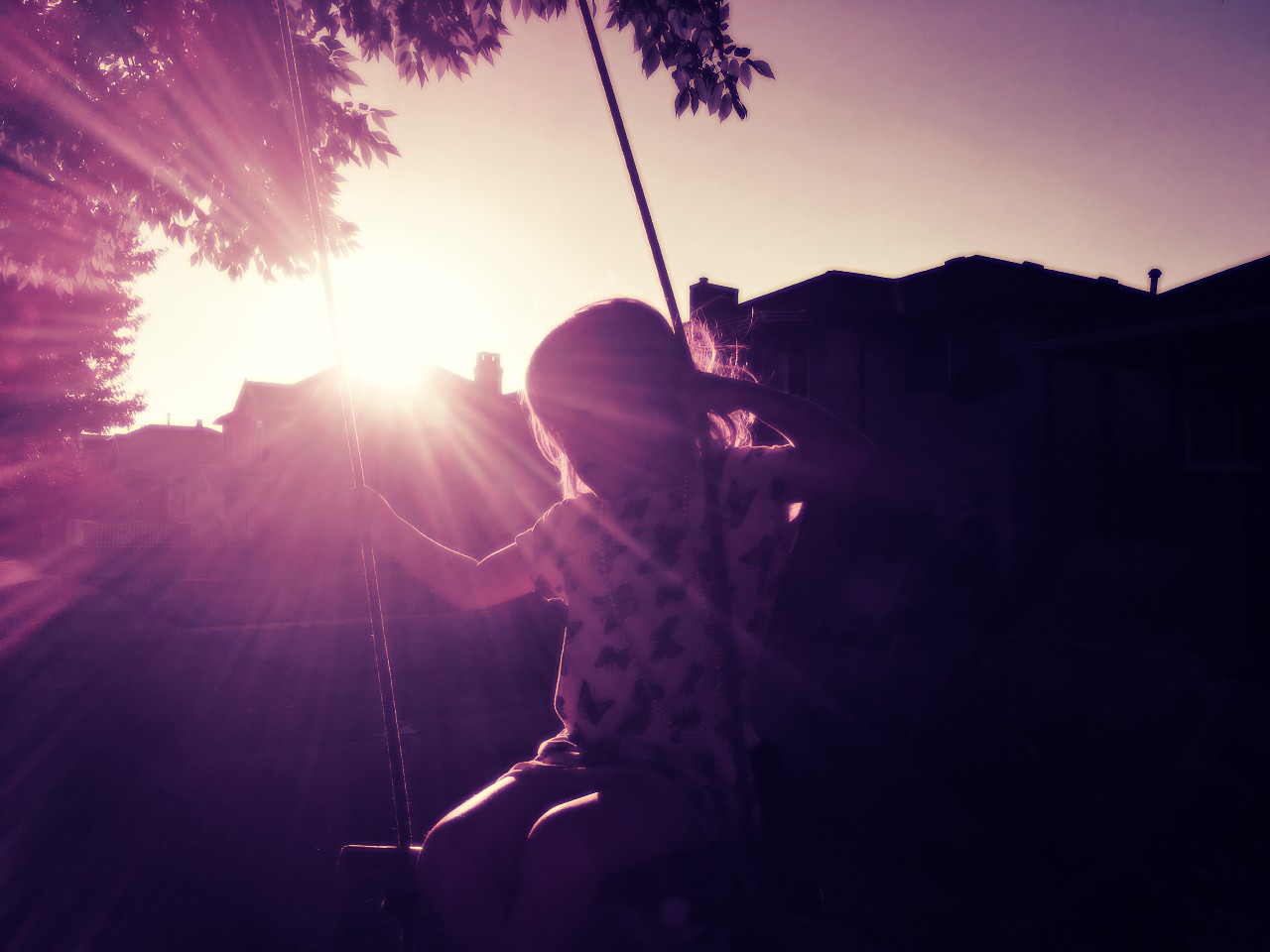In a society that promises to protect its most vulnerable, neurodivergent mothers find themselves on the frontlines of an unending battle. They are advocates and caregivers for their neurodivergent children, fighting against school systems that too often inflict trauma, exclusion, and harm instead of providing safety. The exhaustion they carry is not a fleeting “advocacy fatigue,” but a form of caregiver burnout suffused with betrayal and grief. It is a compounded moral injury—a deep sense of violated trust and injustice—and an embodied grief that lives in their bodies as much as their hearts.
This article explores the intense emotional toll of this phenomenon, examining how the mother–child bond amplifies trauma, how systemic failures engender moral injury, how caregiver burnout accumulates in the daily fight for dignity, and how chronic stress becomes etched into body and mind.
-
You’re not wrong: reflections on motherhood and advocacy
This piece is for the mothers who have become unrecognisable to themselves in the crucible of advocacy—those who perform calm while their bodies tremble with rage, who write polite emails through tears, who scream in the car and smile in the meeting. It…
The mother–child bond under siege during caregiver burnout
For any loving parent, a child’s pain reverberates through the body like a second nervous system, sending warning signals not from the outside in, but from the inside out—as if their harm becomes cellular, internalised, lived in parallel. When my children were harmed at school—discarded, dysregulated, or coerced—I felt it as a visceral injury, not symbolic but physical, something that seised the breath and fractured the day. I remember sitting in a psychiatrist’s office, already hollowed out by advocacy fatigue, only to be told that I ought to remain emotionally separate, that their distress should not disassemble me. And yet, in the same season, I was accused by my ex-husband of having been too detached, blamed for our children’s panic when separated from me. These contradictory demands—detach to be functional, attach to be maternal—formed an impossible terrain of performance and blame, where the body could never do enough, and the mother was always already failing.
When a neurodivergent child is traumatised at school – be it through bullying, restraint and seclusion, harsh discipline, or daily micro-aggressions – the mother’s emotional psyche absorbs that trauma. Psychologists describe this as secondary traumatic stress (STS): a persistent distress that comes from witnessing or hearing about a loved one’s trauma claritycgc.org. STS is “more than just feeling burnt out; its signs and symptoms are similar to posttraumatic stress” claritycgc.org.
A mother might experience nightmares about her child’s experiences, hypervigilance about their safety, or crippling anxiety when the phone rings during school hours. When the mother has her own trauma history or complex PTSD, the bond can become a conduit for re-triggering old wounds – “parents with their own history of trauma can be especially vulnerable to STS” claritycgc.org.
In other words, the very attachment that gives these mothers the strength to advocate fiercely also makes them exquisitely sensitive to their child’s suffering. Every hurt inflicted on the child reverberates through the mother’s nervous system. It is as if two nervous systems are intertwined; the child’s scream of pain becomes the mother’s heartache and adrenaline surge. This intense attunement is a double-edged sword: it motivates relentless advocacy, but it also means each trauma is shared and vicarious trauma, compounding the caregiver’s emotional toll.
In time, I began to recognise that my own childhood trauma was being stirred up—sometimes violently—by the experience of witnessing my children’s pain, and that my nervous system was responding not only to their distress, but also to my own unmetabolised memories of abandonment, confusion, and misattunement. I was mediating my present mothering through the filter of a past that had never truly been witnessed, and it took sustained therapeutic work—honest, wrenching, and slow—to separate my child’s experience from the wounded child in me. That healing was real, and I claim it without apology. But I still grieve the damage done by that psychiatrist’s framing: their clinical detachment obscured the truth of what I now understand as double empathy, a deep autistic attunement between myself and my child, misread as overidentification, pathologised as enmeshment. I believe now that this misinterpretation was both discriminatory and gaslighting—an erasure of the very form of relational wisdom that allowed me to understand what my child could not yet say aloud.
Institutional betrayal and caregiver burnout
I remember the first week of daycare, and the way my children’s faces changed—how they looked when they came home, how something in the set of their bodies or the dulling of their energy or even the unfamiliar scent of their hair told me something was wrong. I sensed it before I could name it, before I had language or evidence, only a visceral thrum of dread in my gut, a tightness behind my teeth, a warning lodged in the space between my collarbones and heart. Still, I brought them back—again and again—because the psychiatrist’s voice echoed in my mind, assuring me that I was overattached, that my distress was evidence of fragility rather than care, that my resistance revealed my pathology. I brought them back because the system rewarded obedience and punished intuition, because we had already stretched to pay $3,000 a month for a nanny and this subsidised placement at $750 was framed as a gift. And because my ex-husband, already skilled in coercion and dismissal, interpreted my reluctance as a symptom of instability, another failure to conform to the logic of containment and gratitude. Much later, once the damage had settled into our bones, I learned what had truly happened—my children had been neglected, left alone, physically restrained, isolated in ways that now seem unforgivable. What I had sensed was real. My refusal had been maternal knowing all along. And still, I carried them back into harm, and that betrayal lives inside me as a grief that cycles and reshapes itself, a dull throb in my chest and a tightness in my lungs, a memory of the first time I overrode my double empathy to be seen as functional, to preserve an image of normalcy that was already shattered.
Caregiver burnout and chronic sorrow
Beyond psychological impact, the mother–child bond creates a powerful sense of duty that can morph into self-blame. Mothers often internalise guilt when their child is harmed (“I still feel a lot of guilt about it as a parent… My child was traumatised,” one mother said after learning her autistic son was repeatedly secluded at school). The “recurrent feelings of grief and loss” that come with seeing a child struggle are part of what researchers call chronic sorrow, a well-documented phenomenon among parents of children with disabilities. tandfonline.com pubmed.ncbi.nlm.nih.gov.
Far from a passing sadness, this sorrow is enduring and cyclical—reactivated by every new experience of exclusion, by each fresh wound of misunderstanding. Crucially, it is not a pathology; as one study insists, “healthcare providers need to understand that chronic sorrow is a normal consequence of having a child with a chronic illness or disability.” pubmed.ncbi.nlm.nih.gov. Especially for those being institutionally harmed.
For these mothers, every IEP meeting that collapses into denial, every party invitation that never comes, every meltdown brought on by institutional carelessness reopens that grief. And that grief is embodied: it settles into migraines and shallow sleep, clenched jaws and acid reflux, stiff joints and stomach knots. It is the sorrow of loving a child whose pain is preventable and ongoing, and the deeper sorrow of knowing that the world continues to inflict that pain with indifference, with systems built on dismissal and delay.
Advocacy’s unseen wounds and moral distress
Over time, the constant vigilance and fighting can turn a mother’s life into what one autistic mom described as feeling “constantly in a war zone” pmc.ncbi.nlm.nih.gov. The term caregiver burnout hardly captures the lived reality of these women; what they endure is more akin to battle fatigue. They must be on guard every day – monitoring how the school treats their child, researching laws and accommodations, pushing back against resistance – often while also de-escalating their child’s post-school meltdowns and healing their trauma, often having to provide more and more intensive accommodations at home to help the child recoup.
This chronic state of fight-or-flight has profound neurobiological and psychological consequences. In a landmark study, researchers found that mothers of individuals with autism showed a physiological profile similar to people under chronic extreme stress – comparable to combat soldiers or PTSD patients pmc.ncbi.nlm.nih.gov. Specifically, these mothers had a disturbed cortisol rhythm: after years of relentless stress, their bodies had downregulated the stress hormone cortisol, a pattern seen in burnout and PTSD where the system is essentially exhausted pmc.ncbi.nlm.nih.gov pmc.ncbi.nlm.nih.gov.
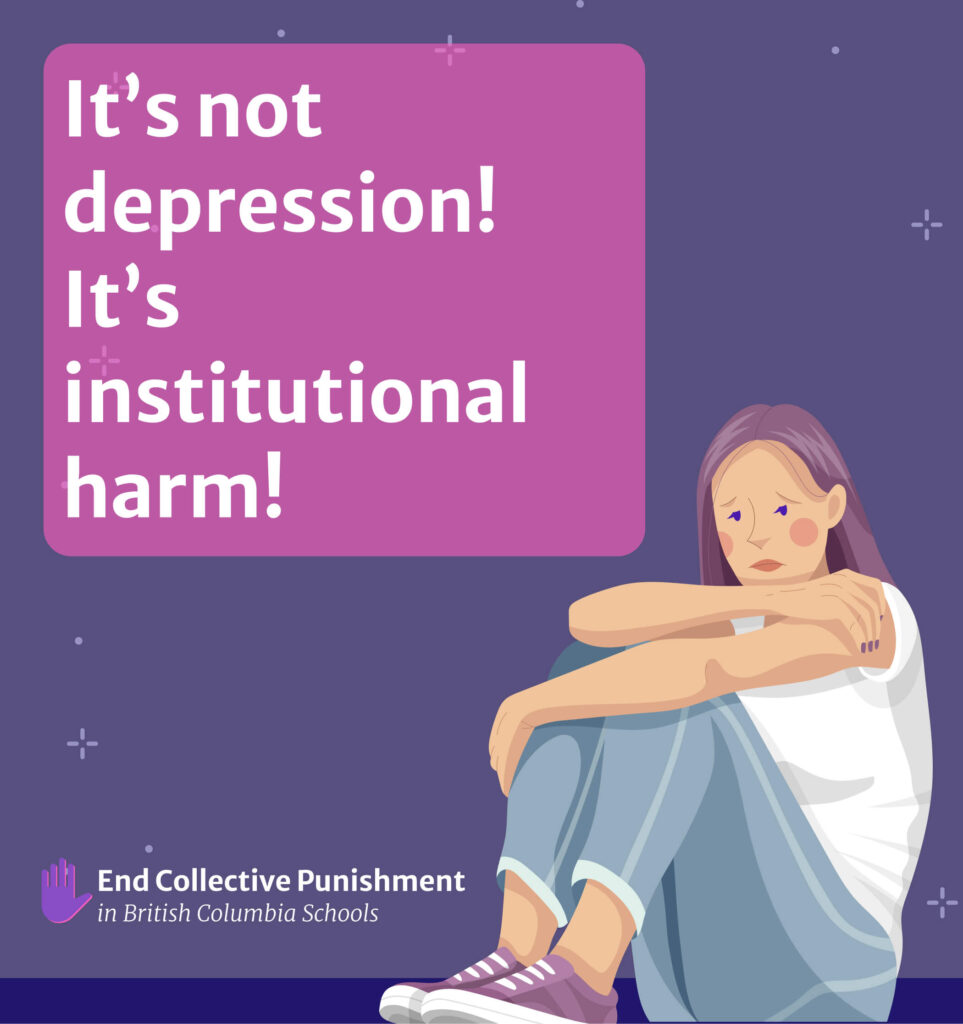
This is the body’s unwelcome adaptation to ongoing fight-or-flight mode: initially, stress might cause a surge of cortisol, but under unceasing pressure the adrenal system can crash into a flattened, blunted response. The result? Profound fatigue, brain fog, and even impaired immune function pmc.ncbi.nlm.nih.gov pmc.ncbi.nlm.nih.gov. As the researchers noted, these mothers “present with the physiological profile characteristic of individuals experiencing chronic stress”, a biological signature of burnout that also mirrors the “arousal, depression, and anxiety found in individuals with PTSD after traumatic events” pmc.ncbi.nlm.nih.gov pmc.ncbi.nlm.nih.gov. In plain terms, years of advocacy battles can rewire a mother’s stress response system to resemble that of someone who has lived through war.
The subjective experience of this state is harrowing. Mothers describe lying awake at night with their heart pounding before yet another school meeting, or having panic attacks in the parking lot. In one study of autistic mothers, participants confessed that the cumulative stress meant their “own mental health has started suffering”, with some having “full-blown heart palpitations at the thought of having to deal with teaching staff and school” pmc.ncbi.nlm.nih.gov.
Others reached a breaking point: “I have given up doing heavy advocacy…because it burnt me out and it wasn’t making any difference,” one mother admitted in defeat pmc.ncbi.nlm.nih.gov.
This goes beyond compassion fatigue (the well-known weariness from caring too much); it is closer to combat stress or shell shock in the trenches of the special education system. The “advocacy fatigue” that these parents carry is often the result of years (sometimes decades) of… emotional stress, navigating complex systems, fighting for services, and even feeling blamed for their child’s needs edutopia.org.
By the time a child reaches high school, many mothers have been through countless cycles of hope and disillusionment, rally and collapse. Burnout manifests not only as exhaustion, but as a kind of despair and hypervigilance: never truly able to let one’s guard down. As one mother in a support forum put it, “Even on ‘good’ days, I’m braced for the next fight – it’s like I don’t know how to live without fighting.” This ceaseless readiness can fray the psyche and shatter any semblance of normalcy in the mother’s own life.
” Hobbies, friendships, and self-care fall away, colonised by burnout’s slow creep. “
– schoolcrisishealing.org
What remains is a survival mode existence, powered by love and adrenaline, but perilously close to collapse.
-
Fight flight fawn freeze: surviving school
There are children who throw chairs when cornered, children who slip quietly out the door or hide behind the portable, children who don’t speak for hours, who go limp, who answer every question with “I don’t know,” and children who nod and smile…
How crisis warps the meaning of priorities
As the pressure mounts and advocacy becomes a full-body occupation, something even stranger begins to happen. The brain, exhausted and rewired by crisis, starts to lose its usual sense of sequencing, its executive ability to discern which tasks are urgent and which ones are vital to life. What used to feel like somewhat automatic or socially expected behaviours—basic hygiene, meal preparation, sleep—begin to slip in importance, displaced by the sheer emotional imperative of stopping the harm to one’s child. This is especially true for women with cognitive differences, such as executive functioning issues, or impulse control struggles. Also for people who’ve endured prior abuse, neglect, trauma , or have the tendency to disassociate or depersonalise, this can be compounded.
Personally, when I triage over a long period of time, I begin to lose touch with what priorities even are. I have given myself bladder infections more than once by deferring the basic act of going to the bathroom, simply because I was too deep in the vortex of tasks and emotional labour to notice my own body’s signals. I have pushed through days without sleep, gone weeks without proper showers, and ignored warning signs like heart palpitations or muscle spasms because all that seemed to matter was stopping the pain my children were in.
Under conditions of unrelenting stress, the mind prioritises harm reduction over self-maintenance. It becomes easier to dissociate, to float outside of your body and observe yourself from above, moving through the motions of life only insofar as they serve the next advocacy task—the next email, the next meeting, the next attempt to be believed. One day you realise your recycling bins have overflowed, you’ve worn the same shirt four days in a row, and none of it matters compared to the choice that sits like a stone in your stomach every morning: reduce your child’s suffering, or let it continue a minute longer.
The guilt of failing to protect them corrodes the motivation to protect yourself. Disgust at your own perceived helplessness eats away at your sense of worth. Friendships grow distant because there is never time. Intimacy fades. You stop showing up to things because you no longer feel like a person who belongs in places where people ask how you’re doing. You begin to feel feral, out of sync with the world of packed lunches and yoga classes and tidy recycling bins, and the question of what matters becomes very simple, very brutal: did my child suffer less today because of something I did, or not?
That is the new metric. That is the warped compass that governs the hours. And that is the cost of sustained institutional betrayal.
” Fuck you for ruining my life”
– Just a Parent
Betrayal by the system
While personal exhaustion is one facet, these mothers’ suffering is compounded by a profound moral injury. Moral injury, a term originally coined in military psychology, refers to the inner damage that occurs when one experiences a betrayal of one’s fundamental values or expectations by an authority or system one trusted. In the context of motherhood, the expectation is clear: schools, healthcare providers, and social services should help and protect children. When instead those systems hurt the child, the mother’s core faith in justice and safety is shattered. As one educator described (in terms that mothers readily echo): “Becoming a teacher to help students, only to be forced to participate in a system that fails them at every turn, creates moral injury” schoolcrisishealing.org. Likewise, becoming a mother and entrusting your child to a school, only to have the school consistently harm or exclude them, creates a deep rupture in the psyche. It is not “burnout” from overwork in the usual sense; it is righteous anguish that “the people that are supposed to be understanding and supportive… [the] school that is supposed to be a community”instead perpetrate or permit harm pmc.ncbi.nlm.nih.gov.
Moral injury is characterised by feelings of guilt, shame, anger, and existential crisis researchgate.net researchgate.net. Mothers often blame themselves in the aftermath of each incident (“If I had moved her to a different class sooner, she wouldn’t have been hurt” or “I failed to protect him”). They oscillate between self-reproach and fury at the system.
Researchers note that “guilt, shame and anger” are core parts of moral injury, along with a loss of trust in formerly valued institutions researchgate.net. For these mothers, every unheeded complaint, every broken promise from the school, deepens that wound. One autistic mother described how she was made to feel like “a convenient excuse for every failure… somehow it was my failure” whenever the school fell short pmc.ncbi.nlm.nih.gov.
The stigma and blame cast on mothers – the insinuation that the child’s struggles or misbehaviour are due to “bad parenting” – intensify the moral injury by adding shame. Indeed, an Australian study of autistic mothers found that they “repeatedly reported feeling perceived to be ‘the problem’… [as if] my parenting was called into question” by schools pmc.ncbi.nlm.nih.gov pmc.ncbi.nlm.nih.gov. Being vilified when seeking help for one’s child is a double betrayal: the system not only fails to assist but actually turns its punitive gaze on the caregiver.
-
The poison of silence: on complicity, healing, and speaking the truth
I had so much pain stuck in my chest and throat. Cancelled screams. Unsaid truths. Every meeting where I stayed quiet, every time I swallowed my words to seem reasonable, every time I hoped that portraying myself a certain way might stop my…
Over time, moral injury erodes something essential. Psychiatrist Jonathan Shay wrote of moral injury in soldiers: “It deteriorates [your] character; [your] ideals, ambitions and attachments begin to change and shrink. Both flavors of moral injury impair and sometimes destroy the capacity for trust. When social trust is destroyed, it is replaced by the settled expectancy of harm, exploitation and humiliation from others.” schoolcrisishealing.org.
This chilling description resonates with mothers who have learned, through painful repetition, to expect harm every time they engage with the school or service system. Their trust is in tatters. Many describe going into meetings already on the defensive, assuming hostility or deceit. A kind of learned helplessness can set in, or conversely a permanent fighting stance. Either way, the mother’s relationship to society is altered – ideals of fairness or the hope that “if I just explain, they will understand” have withered. What replaces them is a grim resolve and often isolation (since others, even well-meaning friends, may not comprehend this ongoing war).
Perhaps the most heartbreaking aspect of this moral injury is the grief that accompanies it – what we might call moral grief. It is the grief of recognising that your child’s innocence and well-being are not sacred in the eyes of the world. It’s a form of “existential crisis and loss” at the heart of moral injury researchgate.net.
” A loss of faith in institutions,
loss of the carefree parenthood you imagined, and loss of aspects of yourself. “
– Just a Parent
Mothers mourn the fact that instead of enjoying their child’s childhood, they are spending it locked in conflict with the very people who should be allies. One mother in the U.K. expressed it poignantly: “I grieve the mother I could have been if the system actually helped us. I barely recognise the angry, hypervigilant person I’ve become.” This is embodied grief in that it lives in their bodies as chronic stress symptoms and in their souls as sorrow. It’s the kind of grief that isn’t a one-time event (like a death) but a continual living loss – often without societal acknowledgment. Friends and family might not see a reason to grieve since the child is alive; but the mother grieves the unnecessary suffering and the stolen moments of normalcy.
-
Maybe tomorrow: reflections on goal post shifting and the economics of access
There were accommodations on paper and endless lip-service meetings. But none of it happened in the classroom. And every time we did what was asked—another intake, another form, another plan—the goalpost moved again. We weren’t asking for miracles. We were asking to be…
The loneliness of being seen as the problem
Each time I try to speak honestly about my own situation, I can already hear the sighs and gentle clucks of friends and acquaintances, people who love me but cannot comprehend the terrain I now inhabit—people who offer the kind of concerned suggestions that reveal their distance from the front lines. Just prioritise yourself. You’ve got to do something good for yourself each day. Kids just need a lot of structure. Have you asked the school if they have any ideas about how to help? They mean well, and still, I feel a strange displacement when I hear their voices, as if they are calling to me from a distant shoreline while I drift half-frozen in an ocean they do not know exists.
They do not understand that we are at war. I have been living in a cold, wet trench for years—sleeping upright in my boots, fingers cracked from cold, skin caked in mud and shame—and that there is no end to this war other than my collapse. That I have come to believe I will die here, of emotional malnutrition, with nothing left in my body but the will to keep my children breathing. There are days I can no longer even imagine a world in which I feel warm. Days I forget what it is to feel washed and safe. Days when the question of whether I am loved feels irrelevant compared to the question of whether my children are still alive inside.
That is what moral injury does. It makes you feel forsaken, even by those trying to help. It makes you mistrust hope, because hope has too often been the prelude to harm. It makes you ashamed, not just of your circumstances, but of your need. And when systems join that chorus of doubt—when schools suggest you are the source of the problem, or respond to your grief with suspicion—it confirms the very wound you were trying to survive.
Sensory experience
Imagine an autistic mother attending a contentious school meeting in a buzzing conference room: the flicker of fluorescent lights just barely perceptible to most but piercing to her; the overlapping voices of multiple professionals, some speaking in turn, others interrupting; the hum of electronics, the scraping of chairs, the tense edge of bureaucratic condescension thick in the air—it can be an assault on the senses that neurotypical people might brush off, but for her it is physically painful, disorienting, neurologically dysregulating. By the end of such a meeting, she is not only emotionally exhausted but possibly fighting a shutdown, a migraine, or a full-body dissociation triggered by sensory stress and institutional disregard.
At the peak of one such period, I contracted COVID several times. From one of those infections came a prolonged earache that I ignored for too long—because my children’s support had been withdrawn again, because I was spending my energy keeping them stable, because appointments felt impossible to schedule when every moment outside of school hours was triage. When I finally went to the doctor, she was dismissive in a way that only made sense if she could not see the emergency I had come to accept as ordinary. Like many disabled or autistic women in caregiving roles, I was gaslit medically—treated as though I were exaggerating or unstable, because the degree of suffering I was describing did not match the tone I could still summon. I was sent away with ear drops that had no effect. More months passed with crackling in my ears until one day, without warning, a high-pitched tone began—sharp and constant, like the sound of an old CRT monitor running in the next room. For those who can hear electricity, for those with misophonia or sensory hyperacuity, that sound is not just annoying but intolerable, fracturing, impossible to tune out.
I panicked. I wept. The tone did not go away.
Eventually I was diagnosed with tinnitus and told that I would have to live like this for the rest of my life. No remedy. No relief. Around the time of that diagnosis, I sat in a meeting with the school district where I could no longer perform any kind of affect—no warmth, no diplomacy, no carefully phrased advocacy language. I was flat. Pancaked. My voice clipped and terse. I remember feeling ashamed of my own tone even as I knew it was all I had left. My nervous system had no buffer remaining.
Around that time, I reached back out to the Ombudsperson’s Office, even though I knew what it would require: the retelling of events, the parsing of harms, the logistical and emotional labour of proving what I had already survived. Because in this system, every attempt to escalate requires a fresh confession, a new dossier of pain, a rehearsing of the very events that broke you. And so began another cycle of retraumatisation. Meanwhile the screaming in my ears continued, unbroken, threading itself into every task, every moment of attempted rest, every sentence I tried to write. My ability to work, to function, to track emails, to respond to anything promptly, became compromised by what I can only describe as a kind of sensory siege—internal, unrelenting, and invisible to those who still expected me to self-regulate and smile.
Neurodivergent mothers, complex trauma, and sensory overload
The situation is further complicated – and intensified – when the caregiver herself is neurodivergent or disabled. Many mothers advocating for their neurodivergent kids are discovering or disclosing that they too are autistic, ADHD, dyslexic, or living with mental health disabilities. This neurodivergence can heighten the challenges of advocacy in several ways.
First, sensory processing differences can make the daily chaos of caregiving and conflict especially draining. Autistic mothers, for instance, often experience sensory overload from things like loud noises, fluorescent lights, or emotional tension. One qualitative analysis found that “autistic mothers experience sensory difficulties, communication challenges, [and] stigma” in their parenting journey researchgate.net.
Similarly, an ADHD mother might struggle with executive function demands – keeping track of paperwork, appointments, crafting long emails of advocacy – leading to feelings of overwhelm or inadequacy. These personal neurodivergences mean the battlefield is even less accessible to the very warriors who must fight on it.
Yet, neurodivergent mothers also bring unique strengths to the table – ones that, tragically, schools often dismiss. Many autistic moms have deep insights into their autistic children’s needs (who better to intuit what an autistic child feels in an overwhelming classroom than an autistic adult who remembers their own school days?).
They often develop creative coping strategies and can bond with their children in affirming ways. In the study of autistic mothers interacting with schools, participants were “baffled when their experiential expertise – of being an autistic parent – was not valued,”noting “I have a little bit more insight than the average normal mother might…yet…my insight and experiential knowledge is ignored” pmc.ncbi.nlm.nih.gov pmc.ncbi.nlm.nih.gov.
This dismissal is a form of ableism that not only squanders an opportunity for better understanding the child, but also deeply wounds the parent. It echoes the lifelong marginalisation many neurodivergent women have faced – now resurfacing in the context of their motherhood.
One mother in that study observed that “being an invisible neurodivergent person is not an easy path in the school environment” pmc.ncbi.nlm.nih.gov, noting how narrow educational norms make no room for neurodiversity.
The gendered expectations of mothers compound this: society expects mothers to be natural communicators and emotion managers. An autistic or ADHD mother who perhaps communicates differently or becomes dysregulated under stress can be harshly judged as “difficult” or “unstable.” Instead of receiving accommodations or understanding, she is labeled the “problem parent” – a stigma many autistic moms have explicitly reported pmc.ncbi.nlm.nih.gov.
-
Poise as pedagogy
There is a cost to composure that institutions never count. When schools reward mothers for staying calm in the face of harm, they turn grace into a gatekeeping tool and punish those who dare to grieve out loud.
For mothers carrying their own trauma – whether from childhood abuse, racism, or a history of being mistreated due to disability – advocacy can retraumatize. The power imbalances at play (e.g., a lone mother versus a table of school officials) can trigger feelings of helplessness reminiscent of past abuse. Indeed, some mothers note that aggressive or dismissive educators make them feel “ostracism and exclusion…just like the rest of my life”, reopening old wounds of being bullied or marginalised pmc.ncbi.nlm.nih.gov. This can send a survivor mother into a trauma response (fight, flight, freeze, or fawn). A mother with complex PTSD might dissociate or have panic symptoms in meetings, which then undermines her ability to advocate effectively – a cruel irony that can lead to further self-blame. In other cases, mothers describe a fawn response where they become exceedingly deferential to authorities (e.g., not questioning a school’s decisions) out of a trauma-rooted fear, only to later feel anger at themselves for not fighting harder. The neurobiological interplay here is profound: their amygdala (fear center) is already sensitised by prior trauma, so it fires readily in any confrontation involving authority or conflict, flooding them with cortisol and adrenaline. Over time, this chronic hyperarousal paired with the necessity to continue engaging the source of threat (because they cannot simply avoid the school – their child must be educated) creates an incessant traumatic loop.
It must be emphasised that many of these mothers are incredibly resourceful and resilient; they learn to self-regulate in astounding ways to get through meetings and meltdowns. But resilience should not be misread as invulnerability. Inside, these mothers may be paying a steep price for holding it together. One can think of it as masking upon masking: the autistic mother masking her sensory overwhelm to appear “calm and rational” in the meeting, the trauma survivor masking her panic to appear “confident and assertive” – all this emotional labor just to have their voice heard, if it is heard at all. Little wonder that when they return to the safety of their car or home, they often collapse in tears or rage. The moral injury discussed earlier is doubly edged here: not only did the system betray their child, it also betrays them – by refusing to accommodate or respect their neurodivergence and by, in some cases, using it against them (e.g., insinuating that the mother’s autism or mental health makes her unreliable or overly emotional). This can trigger what some have called “gaslighting by professionals”, where the mother’s legitimate reports are dismissed due to her disability. Such experiences deepen the sense of alienation and harm.
Intersecting inequities: race, class, and the feminisation of care
While every neurodivergent caregiving mother’s journey is unique, an intersectional lens reveals clear patterns of additional burdens – and traumas – faced by those on society’s margins. Race plays a pivotal role. Mothers of colour advocating for their disabled children often contend not only with ableism but with racism from educational and medical systems.
Studies have found that “children of color with disabilities are less likely to have their needs recognised and met, and often face harsh discipline” compared to white peers nea.org. For example, Black and Indigenous children with disabilities are disproportionately suspended, expelled, or referred to juvenile justice for behaviours that, in white children, might be addressed with support. This means their mothers are constantly in crisis mode, responding to unjust punishments or even fearing that normal childhood behaviours will be criminalised.
The moral injury here is amplified by racial betrayal: systems that are supposed to help not only fail, but do so in a way that echoes societal racism. Black mothers, in particular, talk about having to “tone down” their advocacy style to avoid being stereotyped as the “angry Black woman,” even when they are righteously furious that their child was mistreated. This emotional self-policing is extra labor that can fuel internalised frustration and stress. Moreover, Black and Latina mothers are more likely to have Child Protective Services involved if a disabled child’s behaviour is interpreted as stemming from “bad home environment” – an ever-present threat that any show of mental health struggle by the mother could be weaponised against her. This looming fear – that seeking help might backfire – is itself traumatically stressful and forces many mothers of color to soldier on with even less support, deepening isolation.
-
Collective punishment in schools: How humiliation undermines emotional safety and learning
In classrooms around the world, students are sometimes punished for the misbehavior of others. One student breaks a rule, and the entire class loses a privilege. This practice – known as collective punishment – persists even though it is broadly recognised as unjust. In fact,…
Class and economic stability also drastically shape the caregiving experience. Many of these advocacy battles require time off work to attend meetings or therapy appointments, money to pay for private evaluations or legal advice, and knowledge to navigate bureaucracies. Low-income mothers often have fewer resources to draw on: no flexible job, no savings for an education lawyer, perhaps no reliable transportation to get to the school. The result is a higher stress burden and often a feeling of powerlessness in the face of institutions. Indeed, one study found that repeatedly dealing with school punishment for their disabled child “contributed to job loss” for parents, as well as household disruption ideas.repec.org. It’s not hard to see why: if a mother is called midday to pick up her child for the third time this month, her employer’s patience may wear thin. Over years, this can trap families in poverty or financial precarity, adding yet another layer of chronic stress (how to pay the rent) on top of the advocacy stress. Poverty also correlates with fewer alternative options – for instance, private special education or moving to a better school district might be off the table – leaving mothers feeling stuck and culpable for not being able to “rescue” their child from a harmful school. The grief of economic limitation is real: grieving the opportunities your child could have had if you had the means, grieving the career or stability you personally sacrificed.
And then there is the inescapable fact of gender. Caregiver burnout in this context is heavily feminised – not because fathers do not care or do not experience pain, but because social and cultural norms overwhelmingly place the responsibility of care and advocacy on mothers. Research consistently shows that mothers of disabled children carry more of the caregiving and suffer more health impacts than fathers frontiersin.org frontiersin.org. Mothers are more likely to reduce work hours or quit jobs to manage their child’s needs, which can lead to isolation and loss of identity beyond “mom” frontiersin.org. They also face cultural narratives that idolize self-sacrifice – the “warrior mama” who never rests – which can make it harder to admit exhaustion or seek help (guilt whispers that doing so would mean you’re not devoted enough). The intersection of motherhood and ableism can be particularly cruel: historically, mothers have been blamed for children’s disabilities (from the debunked “refrigerator mother” theory of autism to generalised mom-shaming). Echoes of that blame persist in how schools may subtly or overtly lay responsibility on the mother for a child’s challenges (“if only you disciplined him more at home…” or “her anxiety is likely because you’re too soft”). Such misogynistic undertones add moral insult to injury, leaving mothers feeling shamed on top of being exhausted and enraged.
-
Gaslighted by proxy: how schools grant coercive power to the quietest parent
When one parent advocates and the other undermines, the school almost always aligns with the one who “gets along.” Not because that parent is more informed, more accurate, or more protective—but because they are easier to accommodate. They agree easily. They stay quiet.…
For disabled mothers, there is also the fear of being deemed unfit. Society’s prejudice that disabled people cannot be good parents lurks in many interactions. A deaf mother might be left out of discussions about her child because teachers don’t provide an interpreter readily. A mother who uses a wheelchair might find the school physically inaccessible for meetings. In worst cases, mothers with intellectual or psychiatric disabilities may face threats that their children will be taken away. These systemic biases create a near-constant pressure to prove oneself as a mother – an extra layer of emotional labor that nondisabled mothers do not carry to the same degree. One can see how each intersection (race, class, disability, gender) doesn’t just add stress in a linear way but exponentially compounds the risk of burnout and moral injury. A Black, disabled, low-income mother, for instance, is navigating a labyrinth of racial prejudice, ableism, financial insecurity, and gendered expectation all at once. Indeed, research confirms that raising a child with disabilities takes the heaviest toll on the health of Black mothers compared to other groups frontiersin.org. Black women in a study were found to have the highest rates of chronic illness and functional impairments when caring for a disabled child, reflecting the compounding of racial stress and caregiving stress frontiersin.org. This is not due to any personal failing, but rather the weight of structural inequities on their shoulders.
Intersectionality also means we must recognize community and cultural strengths. Extended family networks in some cultures may provide emotional or practical support that softens the blow (e.g., a grandmother who can watch the child when school is unsafe). Faith or cultural values can offer frameworks of meaning (some mothers find solace in viewing their advocacy as part of a broader struggle for justice for their community). However, these strengths should not excuse the systemic failures. They simply remind us that these mothers are not passive victims; they often draw upon deep wells of courage and love rooted in their identities.
-
I only asked for gentleness: on parenting a PDA child in a punishing world
There is a certain kind of child—intuitive, emotionally articulate, wired with a startling perceptiveness about power and tone, about coercion and choice, about the invisible terms of adult authority—whose presence in the classroom becomes, almost immediately, a threat to the institution’s rhythm, a…
Health toll and embodied grief
Years of sustained advocacy under traumatic conditions have a profound impact on a mother’s body. The concept that “the body keeps the score” (coined by trauma expert Bessel van der Kolk) is vividly illustrated in these caregivers. Chronic hyperarousal and stress can translate into a host of health problems: migraines, autoimmune flares, gastrointestinal issues, anxiety disorders, depression, and more. In one qualitative study, parents described how the trauma of their child’s repeated school punishments led them to develop “physiological and psychosomatic health challenges, such as depression, hypertension, [even] stroke, [and] peri-traumatic emesis (vomiting)” ideas.repec.org. These are extreme outcomes, but not implausible when you consider the blood-pressure-spiking rage and panic many mothers experience regularly. The term allostatic load refers to the cumulative “wear and tear” on the body from chronic stress, and these mothers often exhibit high allostatic loads. For instance, the previously mentioned cortisol dysregulation in autism mothers is one marker of this wear and tear pmc.ncbi.nlm.nih.gov. Fatigue becomes a constant companion – not the kind cured by a single good night’s sleep, but a bone-deep fatigue from years of running on adrenaline. One study even likened the daily exhaustion reported by these mothers to that of shift workers or others in high-stress occupations pmc.ncbi.nlm.nih.gov.
This physical toll is part of what we mean by embodied grief. The grief doesn’t just live in thoughts; it expresses through the body. A mother might carry tension in her neck and shoulders that never unclenches, symbolising the burdens she carries. She might develop stress-related eczema or chronic pain, her body literally “crying out.” There is an image that sticks in one’s mind of a mother who, after a particularly brutal school year where her child faced constant abuse, found her hair falling out in clumps (alopecia areata triggered by stress). When systems break our hearts, our bodies often manifest the breakage. Moreover, many of these mothers neglect their own healthcare while prioritising their child’s, leading to unmanaged conditions or advanced burnout by the time they seek help. It’s telling that when asked about coping, a number of moms will wryly note they survive on caffeine, comfort food, or even nicotine – short-term crutches that can harm health long-term but feel necessary just to push through another day.
Sleep disturbance is another common theme: insomnia from racing thoughts, or nightmares replaying conflicts or envisioning feared future scenarios. Over months and years, such sleep loss further impairs memory, concentration, and emotional regulation, creating a vicious cycle where the burnt-out mother struggles even more to advocate effectively (which then creates more problems, feeding back into stress). The embodied aspect of moral injury might also include the sensation of one’s chest hurting when thinking about the injustices done. Some mothers describe feeling literally heartsick or having panic attacks that feel like heart attacks. Science shows that chronic stress can contribute to heart disease – it’s not at all far-fetched that moral injury contributes to literal cardiac injury over time.
-
Maternal scream: embodied rage in a system that punishes and smiles
This rage didn’t appear in a vacuum. It was not spontaneous. It is the inevitable consequence of a system that harms children while demanding that mothers smile back. It is what happens when a process is engineered to fail your child and then…
Crucially, recognising this as embodied is important for validation. Too often, society diminishes these physical complaints or attributes them to “middle age” or suggests the mother just practice more self-care. But bubble baths and yoga, while lovely, cannot undo the physiological impacts of ongoing trauma and injustice. What these mothers need is systemic self-care: i.e., systems that stop inflicting trauma so that mothers can actually have the space to heal. One cannot “meditate away” the cortisol spike that comes every time one’s child boards the school bus into a potentially harmful environment. The solution must be to eliminate the harm at its source.
Furthermore, embodied grief speaks to the idea that these mothers are, in a sense, living memorials of all that has happened. Each scar on their psyche or body is a testament to what they and their children have endured. It is as if they carry the archive of these experiences in their cells. From an anthropological viewpoint, we could say their somatic suffering is a form of witnessing – their bodies testifying to the cruelty of broken systems. When a mother’s blood pressure skyrockets every time she nears the school building, it’s her body recalling the countless confrontations and disappointments associated with that place.
Finally, embodied grief connects to the notion of moral injury as a wound of the soul. Some scholars describe moral injury as not just a psychological wound but a spiritual one – a hurt that pierces one’s sense of meaning. Mothers in these situations often grapple with existential questions: “Why is the world like this?” “How can people be so cruel to a child?” “What kind of future will my child have in a world that doesn’t accept him?” These questions can lead to profound sorrow – a mourning for the ideals of fairness and innocence that have been lost. It’s a form of grief that can resemble disenfranchised grief, since it’s not grief over a tangible death but over intangible losses (trust, safety, hopes). Yet it is very real. Recognising and naming this grief is the first step toward addressing it.
Toward collective healing and transformation
If there is one thread of hope that runs through the narratives of these mothers, it is the possibility of collective action and solidarity. While individual coping strategies (therapy, support groups, mindfulness, etc.) are valuable and should be accessible, the true antidote to moral injury is moral justice. As one trauma expert pointed out in the context of educators: “If we only talk about burnout, we hold the individual responsible for the problem. If we center moral injury, we hold the system responsible for the harm.” schoolcrisishealing.org. In other words, healing must come not just from telling mothers to be more resilient, but from demanding that systems stop injuring them and their children. This means schools embracing trauma-informed and neurodiversity-affirming practices, it means policy changes like banning dangerous restraints and ensuring robust disability accommodations, and it means adequately funding and staffing special education so that mothers aren’t forced to fight for every scrap of support. It also means accountability – when a system or professional does harm, there must be acknowledgement and restitution, not denial and gaslighting.
-
When energy returns: on finding purpose, refusing silence, and recovering from institutional harm
When I could barely rise from the couch, I believed my exhaustion was depression. Now I see it was the cumulative harm of years spent silencing myself in hostile institutions, suppressing truth to protect my neurodivergent children. The body remembers this violence; it…
Mothers are increasingly banding together to create this change. One can hear the fierceness in their voices – a blend of protective rage and visionary determination. In the face of being ignored or silenced individually, they form coalitions, start Facebook groups, attend school board meetings en masse, share each other’s stories in blogs and articles, and even file lawsuits and Human Rights complaints.
This collective advocacy can be empowering; it reminds each mother that she is not, in fact, alone or “crazy” for feeling as she does. There is immense validation in hearing another mother say “me too, I see it, it happened to us as well.” It transforms the narrative from personal failure to systemic issue. For example, when dozens of North Carolina parents came forward with evidence that their disabled children were being restrained and the incidents covered up, it forced media attention and a federal investigation news-medical.net news-medical.net. That kind of solidarity and exposure is necessary to prevent future moral injuries. It is a way of societally saying, we see the injustice and we won’t allow it to continue.
Intersectional feminism teaches us that those most impacted must be centred in solutions. Thus, the insights of neurodivergent, disabled mothers of color should guide reforms in education and social services. Their lived reality points to what truly helps. For instance, these mothers often highlight the rare instances of allies in the system: the one empathetic teacher who listened without defensiveness, the principal who admitted fault and changed an approach, the social worker who offered concrete support for the mother’s well-being too. Scaling up those instances – making empathy and partnership the norm rather than the exception – could transform experiences. Imagine if schools approached parent relationships with the motto recommended by one educator: “Start with empathy, not expertise,”recognising that parents may carry “years of advocacy fatigue and emotional stress” and prioritising listening to them edutopia.org. That alone can defuse the adversarial dynamic. Research backs this up: when educators validate parent experiences and actively listen, families feel more valued and collaborative solutions emerge edutopia.org. An empathetic system would not force mothers to be warriors all the time. It would, as one mother in the Australian study said, stop “setting us up to be a really aggressive kind of power struggle” and instead allow advocacy to be a cooperative effort for the child’s benefit pmc.ncbi.nlm.nih.gov.
There is also a need for trauma-informed care for the caregivers. Mental health services for parents, respite programs, and peer support networks can help mitigate burnout. Some mothers have found healing in somatic therapies that address how trauma lodges in the body, or in community care circles that share burdens. On a community level, recognising the phenomenon of caregiver moral injury could reduce stigma; rather than whisper about the “angry mom” at school, communities could ask, “What has that mom been put through, and how can we support her?” Shifting the lens in this way is powerful. It aligns with a social model of disability and care: the problem isn’t the mother’s inability to cope, it’s that she’s being asked to carry the impossible alone.
Finally, any call to transformation must acknowledge grief and allow space for it. Part of healing is mourning what’s been lost – openly. Mothers should not have to hide their tears or be stoic superwomen. In fact, their willingness to express grief can be transformative for society, as it forces us to confront the human cost of our failures. One could envision, for example, a truth-and-reconciliation style forum where parents share stories of how systems harmed their kids and themselves, and officials actually listen and apologize. This might sound utopian, but smaller versions of it (listening sessions, restorative justice meetings in some districts) have shown that when caregivers feel heard and their pain acknowledged, some of the burden lifts. It doesn’t erase the past, but it validates reality and can rekindle trust.
In closing, the journey of these neurodivergent mothers is one that traverses love and fury, resilience and fragility, despair and hope. They have been forced to be heroes, but they should not have had to be. Their burnout is not a personal failure or just a matter of needing a break – it is, as we have framed, a compounded moral injury born of systemic betrayal and an embodied grief carried for their children. By reframing it as such, we honor the truth of their experience and issue a clarion call: The answer to this crisis is not to tell mothers to toughen up or practice more self-care in isolation. The answer is collective care and systemic change. It is to transform our schools, our services, and our cultural attitudes so that no mother has to go to war to secure her child’s right to a safe and joyful education. It is to insist, as a society, that we will not stand by while those who give so much of themselves are broken. In the fierce and tender words of these mothers lies a blueprint for revolution – one that demands we do better by the children and the caregivers who hold our future in their arms.
Sources
- Adams, D. et al. (2021). Autistic Mothers of Autistic Children: A Preliminary Study in an Under-Researched Area. Autism in Adulthood, 3(4), 339-346. DOI:10.1089/aut.2020.0078 pmc.ncbi.nlm.nih.gov pmc.ncbi.nlm.nih.gov
- Bell, C., & Craig, M. O. (2023). Suspended, restrained, and secluded: Exploring the relationship between school punishment, disability, and Black and white parents’ health outcomes. Children and Youth Services Review, 153, 107119. ideas.repec.org
- Coughlin, M. B., & Sethares, K. A. (2017). Chronic Sorrow in Parents of Children with a Chronic Illness or Disability: An Integrative Literature Review. Journal of Pediatric Nursing, 37, 108-116. pubmed.ncbi.nlm.nih.gov
- Clarity Child Guidance Center (2019). Understanding Secondary Trauma Stress – A Guide For Families. (Blog post by Vanessa Jacoby, PhD). claritycgc.org
- Edutopia (2025). 6 Ways to Increase Family Engagement in Special Education (R. Celebre). Edutopia, July 16, 2025. edutopia.org
- Leland, J. (2024). Is it burnout or is it a moral injury? School Crisis Recovery & Renewal Blog, Sept 12, 2024. schoolcrisishealing.org schoolcrisishealing.org
- Rabba, A. S., et al. (2025). “I’m sick of being the problem”: Autistic mothers’ experiences of interacting with schools for their autistic children. Autism, 29(4), 1008-1020. pmc.ncbi.nlm.nih.gov pmc.ncbi.nlm.nih.gov pmc.ncbi.nlm.nih.gov
- Seltzer, M. M. et al. (2010). Maternal Cortisol Levels and Behavior Problems in Adolescents and Adults with ASD. Journal of Autism and Developmental Disorders, 40(4), 457-469. pmc.ncbi.nlm.nih.gov pmc.ncbi.nlm.nih.gov
- Wissö, T., Melke, A., & Josephson, I. (2024). Exploring moral injury among parents with children in out-of-home care. Child & Family Social Work, 29(3), 679-688. researchgate.net researchgate.net
- Additional sources embedded within text: News report on school restraint and seclusion (KFF Health News) news-medical.net news-medical.net, National data on disparities (NEA) nea.org, and other peer-reviewed and first-person sources as cited throughout.

